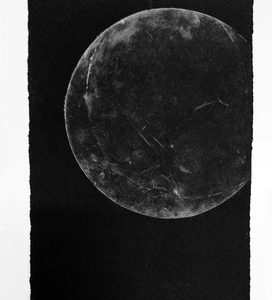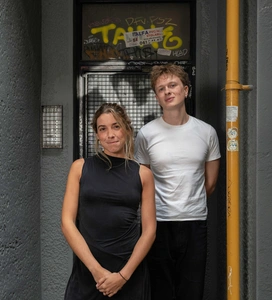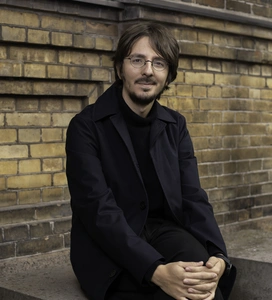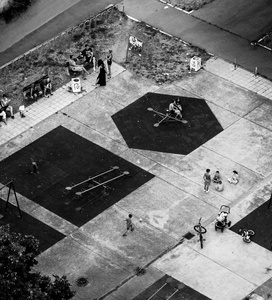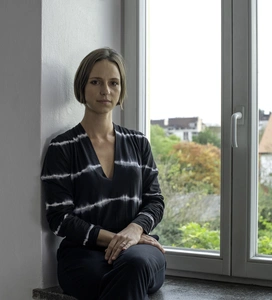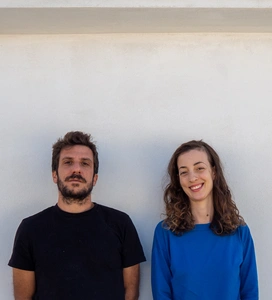Understanding City Growth
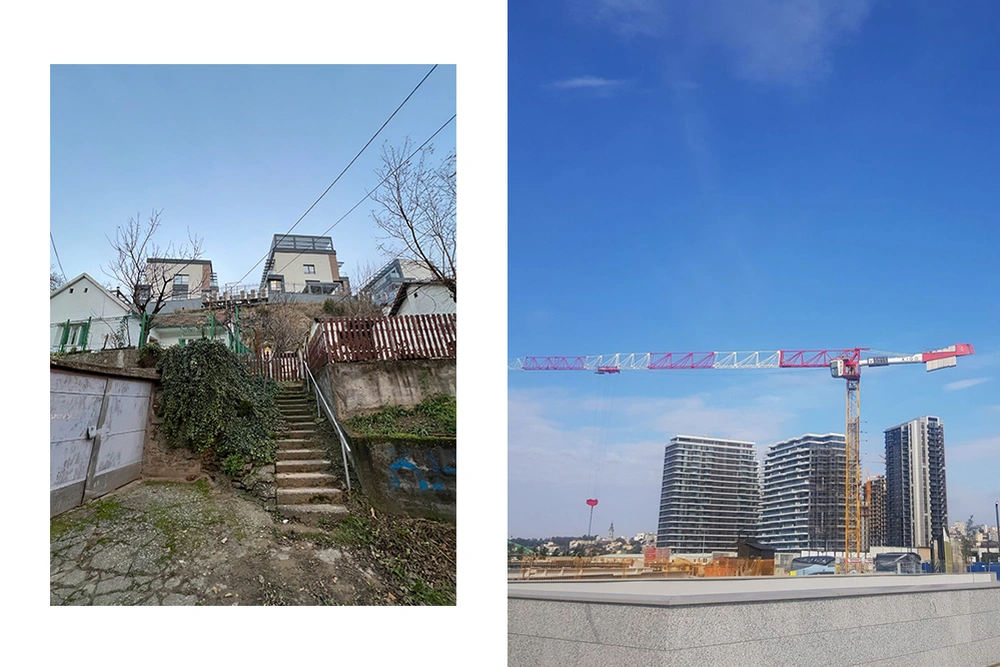
During the three years of the first cycle of the LINA platform (2023-2025), we invited young creatives to Belgrade, who participated in the LINA Open Call, to give insight into the potential of Belgrade's urban development from their perspective, through various media and formats. Keeping in mind the short deadlines, as well as other obligations of the fellows, we decided to develop the project through the entire three-year cycle and to round it off in the last year with a joint exhibition of all participants.
Bearing that in mind, this year, when selecting fellows, we concentrated on those who could be the authors of the concept and design of the exhibition setting. During 2024 and 2025, two teams that were shortlisted for LINA Open Call 2024 resided, researched and worked in Belgrade:
- docar films - Rocio Calzado and Jasper Meurer;
- Andrea Arcese and Loris Luigi Perillo.
Docar is a team that, in its work, due to the different professional backgrounds of its members, combines knowledge and skills from the fields of sociology, social movements, urban planning, architecture, housing policy and film art. Their primary field of joint work is documentary film. As part of the LINA/BINA project, thanks to their multidisciplinary experiences, they accepted the creative challenge of being curators of the exhibition.
Andrea Arcese and Loris Luigi Perillo are architects who spent their formative years and the beginning of their careers in several European countries, gaining experience in the field of research, design, participation in architectural competitions and teaching practice. In Belgrade, their task was to create the design and visual identity of the installation in cooperation with the authors of the concept.
We use this opportunity to mention that another meeting, after the one in Srajevo, with Andrea and Luigi in Pula, during the Member check with DAI/SAI, meant a lot for us to definitely decide to cooperate with them. Direct and personal contact is extremely valuable, especially in situations where a more delicate and demanding collaboration is agreed upon, such is exhibition production.
During the three years of the LINA/BINA residency, the author's attention was focused on topics related to investor urban planning and the consequences it brings to the functioning and appearance of Belgrade in the future. This topic is necessarily connected with another very important topic of residential architecture and the gap that arises due to the needs of citizens and insufficient supply within the category of social housing. Another important topic was devoted to the connection and intersection of different urban typologies, mega structures of residential settlements of late brutalist soc-modernism and the remains of peripheral rural settlements. The third topic that occupied the LINA fellows was the study of so-called residual spaces within urban blocks and the search for ways to re-use, re-design or in some cases just to repair them in accordance with the needs of modern Belgrade residents.
This year's participants, Rocio Calzado and Jasper Meurer and Andrea Arcese and Loris Luigi Perillo conceived and designed the exhibition under the umbrella title Understanding City Growth, which unites variety of diverse works created during the three editions of the BINA festival, within the framework of the LINA platform. The task of LINA fellows was to present the works of the fellows from previous years in a simple and comprehensible way, to give insight and try to interpret and synthesize their ideas and design proposals. Bearing in mind the number and variety of contributions, setting up a concept and creating a spatial solution for the installation was a real challenge, which these two teams in cooperation solved extremely successfully. In addition to works related to Belgrade topics, the exhibition also featured works that fellows did in collaboration with other LINA members (DAI/SAI, MAXXI, SAM, HDA, Barleti University, IAF, dpr Barcelona) during the previous three years. In this way, the exhibition was also an opportunity to point out the importance of networking and connecting various international institutions and organizations that, united in the LINA platform, offer the possibility of presenting and empowering young creatives who are at the beginning of their professional careers.
Both teams that worked on the exhibition visited Belgrade twice, at the end of 2024, when they conducted research and familiarized themselves with the material and the exhibition space. In the period January-March 2025, they worked on the concept and defining the spatial setting, the design of elements, the creation of prototypes, and then on the production of the entire exhibition structure. Both teams were personally involved in the process of setting up the exhibition, which we believe was a valuable experience for them. The modular solution of the exhibition structure and the rhythmic repetition of elements with small spatial variations perfectly mastered the gallery space.
By setting up a long uniform wall, using simple materials, the setting up of very diverse exhibition material (drawings, photos, video...) was successfully solved. Also, what we consider particularly valuable is that the exhibition structure can be used multiple times, recycled and used in different ways for future settings.
On the occasion of the opening of the exhibition, all LINA fellows-participants from previous years were invited to Belgrade. On that occasion, a panel was organized to discuss the exhibited works, the experience of staying and working in Belgrade, as well as the experiences during cooperation with other LINA members. The panel discussion was held in a hybrid format, participants who were not able to attend joined via Google Meet.
We believe that the contact with local experts from public companies such as the Institute of Urban Planning, the Faculty of Architecture and Public Greenery, as well as representatives of civil initiatives such as the Collective Ministry of Space and Initiative for Economic and Social Rights - A11 provided significant insight into the spatial and architectural situation in Belgrade, as well as the directions in which the city is planned on the one hand, built on the other, and critically considered on the third. At the same time, during the work in the field, the fellows came into contact with citizens, but also with representatives of smaller local initiatives related to certain parts of the city, who are advocating for the protection of their rights to public space, greenery, etc. in their neighbourhoods.
Exhibitors: Alberto Roncelli and Nicole Vettore; Giulio Galasso and Natalia Voroshilova; Isidora
Koščica, Jana Čvertkov and Lana Jeremić; Maria Mendez; Nevena Delić; Sara Ramezani,
Francesca Cocchiara and Sergios Strigklogiannis; Rebeka Bratož Gornik
Panel discussion: Andrea Arcese, Loris Luigi Perillo, Rocio Calzado (online), Lana Jeremić; Maria
Mendez; Nevena Delić (online); Sara Ramezani, Francesca Cocchiara and Sergios Strigklogiannis
(online); Rebeka Bratož Gornik
Related fellows
